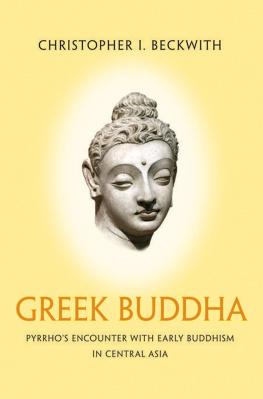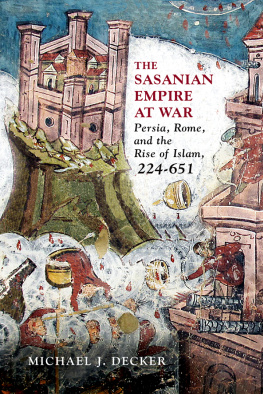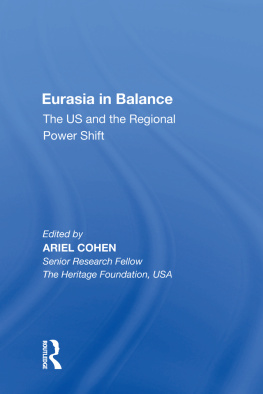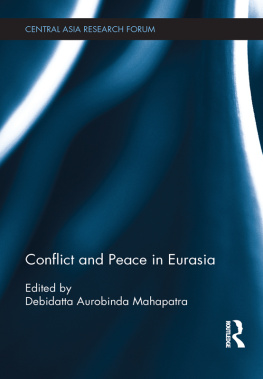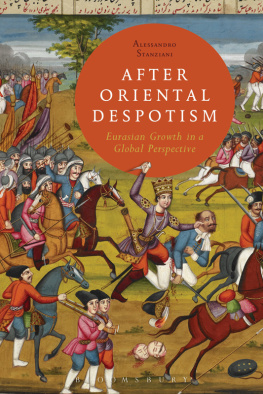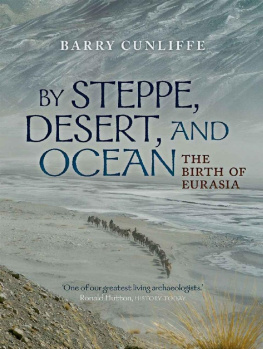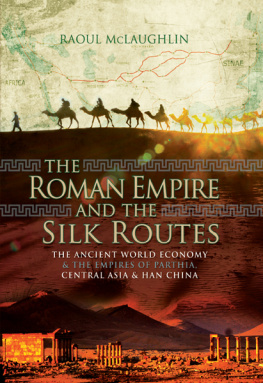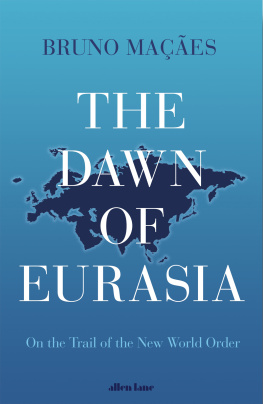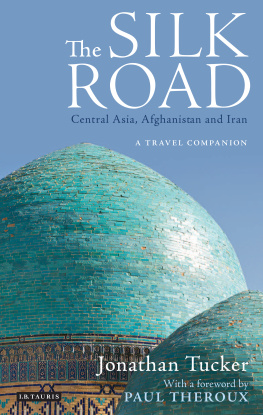EMPIRES OF THE SILK ROAD

EMPIRES OF THE SILK ROAD
A History of Central Eurasia
from the Bronze Age
to the Present

CHRISTOPHER I. BECKWITH
PRINCETON UNIVERSITY PRESS
Princeton and Oxford
Copyright 2009 by Princeton University Press
Published by Princeton University Press, 41 William Street, Princeton, New Jersey 08540
In the United Kingdom: Princeton University Press, 6 Oxford Street, Woodstock,
Oxfordshire OX20 1TW
press.princeton.edu
All Rights Reserved
Seventh printing, and first paperback printing, 2011
Paperback ISBN 978-0-691-15034-5
The Library of Congress has cataloged the cloth edition of this book as follows
Beckwith, Christopher I., 1945
Empires of the Silk Road : a history of Central Eurasia from
the Bronze Age to the present /Christopher I. Beckwith.
p. cm.
Includes bibliographical references and index.
ISBN 978-0-691-13589-2 (hardcover : alk. paper)
1. Asia, CentralHistory. 2. Europe, EasternHistory. 3. East AsiaHistory.
4. Middle EastHistory. I. Title.
DS329.4.B43 2009 958dc22
2008023715
British Library Cataloging-in-Publication Data is available
This book has been composed in Minion Pro.
Printed on acid-free paper.
Printed in the United States of America
7 9 10 8
CONTENTS

PREFACE

Nevertheless, I have kept my original main goal foremost in my mind: to clarify fundamental issues of Central Eurasian history that to my knowledge have never been explained correctly or, in some cases, even mentioned. Without such explanation, it would continue to be impossible to understand the ebb and flow of history in Eurasia as anything other than the fantasy and mystery that fill most accounts. Mysteries are intriguing, and sometimes they must remain unsolved, but enough source material is available to explain much of what has been mysterious in Central Eurasian history without resorting to the usual suspects."
In this connection there is a widespread opinion that few sources exist for Central Eurasian history and consequently little can be said about it. That is a misconception. An immense body of source material exists on the history of Central Eurasia, especially in its connections with the peripheral civilizations. Because that history covers a span of four millennia, and as there is a correspondingly large secondary literature on some of the topics within that area and period, to do it any sort of justice would require a series of massive tomes that could be produced only by a team of scholars, not by one writer working alone with attendant limitations on knowledge, skills, energy, and time. The only way a single individual could manage to produce a book on such a huge topic would be by pulling back and taking a big-picture approacha very broad perspectivewhich, as it happens, is what interests me.
In general, therefore, this book is not a highly focused treatment of any specific topics, individuals, political units, periods, or cultures (not even of the Central Eurasian Culture Complex, which deserves a book of its own), with the partial exception of those that are of particular interest to me. It is also not an exhaustive account of events, names, and dates, though the observant reader will note that I have tried to provide that information for all important events and people, even though I sometimes have had to go to surprisingly great lengths to find it. Finally, it is not a source study or a comprehensive annotated bibliography. In recent years a number of excellent studies have been published on some of the most notable people, places, periods, and other topics, with full annotation and references, and I recommend them to interested readers.
What I have done is to reexamine the more or less unitary received view of Central Eurasians and Central Eurasian history and attempt to revise it. The notes are therefore largely devoted to discussion of selected points I felt needed further comment or investigation. Whatever detail I have been able to squeeze into the narrative or the topical sections is there mostly because it seemed important to me at the time and I did not want to leave it out. That means I have left out many things that are undoubtedly important but did not seem crucial to me at the time, or that I simply overlooked. I originally did not intend to include more than absolutely minimal annotation, to keep my focus on the argument. As one can see, it did not end up quite that minimal. Habits are difficult to repress, and apparently I like notes that go into detail on interesting topics. (Some long notes, which are mainly of interest to specialist scholars, would cause congestion in the main text, so I have placed them in a separate notes section at the end.)
However, this book does not go to the other logical extreme either. It is not a general theory of history, and I do not intend to imply any such theory in it. There are many recent works of this type, but my book is not one of them. I also do not examine in any detail the many theoriesor, rather, variantsof the one current theoryof Central Eurasian state formation that have been published in the past few decades, though they are discussed briefly in the epilogue. Neither my interpretation nor my terminology derives from such theoretical or metatheoretical works. My intention has been to let my interpretations arise naturally from straightforward presentation and analysis of what I consider to be the most relevant data known to me. I may not have succeeded in this attempt, but in any case I have intentionally left the book free of overt and covert references to world-historical theories and metatheories, most of which I know little about.
With respect to the data and history writing in general, some comment on my own approach is perhaps necessary, especially in view of the recent application of the Postmodernist approach to history, the arts, and other fields. According to the Modernist imperative, the old must always, unceasingly, be replaced by the new, thus producing permanent revolution. If the vast majority of people, who are capable only of the former choice (total belief), are joined by intellectuals and artists, all agreeing to abandon reason, the result will be an age of credulity, repression, and terror that will put all earlier ones to shame. I do not think this is good. I think it is bad. I reject Modernism and its hyper-Modern mutation, Postmodernism. They are anti-intellectual movements that have wreaked great damage in practically all fields of human endeavor. I hope that a future generation of young people might be inspired to attack these movements and reject them so that one day a new age of fine arts (at least) will dawn.
Paleontology, a kind of history, is actually a hard science, so it has been largely immune to the anti-intellectualism of Postmodernist scholars. Although I am interested in dinosaurs, this book is not about their history but about human history; in my view, though, the same rules apply, and the Postmodern view is literally nonsense (literal nonsense being, in part, the goal of the views proponents). I do not think that my own experience of the world is a meaningless miasma of misperceptions simply because it has been experienced by me and is therefore subjective. It is certainly true that everything is to some degree uncertainincluding science, as scientists know very welland all scholars must, of course, take uncertainty and subjectivity into account. I do not think history is a science in the modern Anglo-American sense, but I do think it must be approached the same way as science, just as all other fields of scholarly endeavor should be. Because the Postmodern agenda demands the abandoning not only of science but of rationality, I cannot accept it as a valid approach for scholars or intellectuals in general.
Next page

